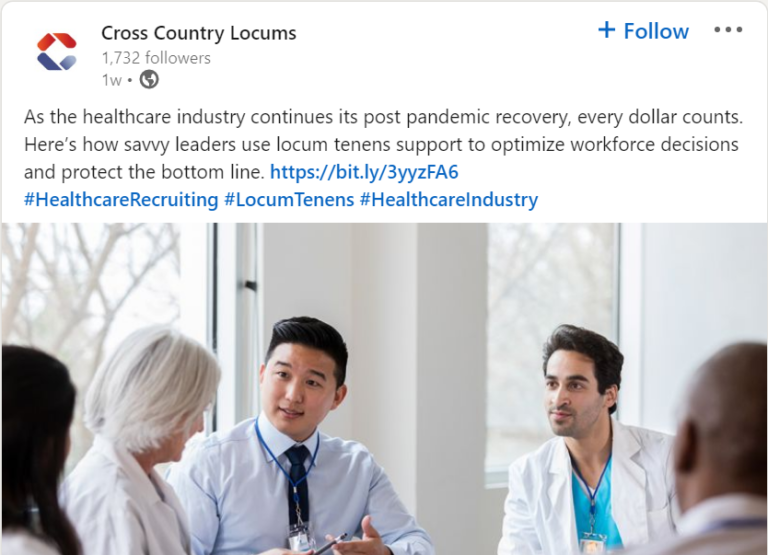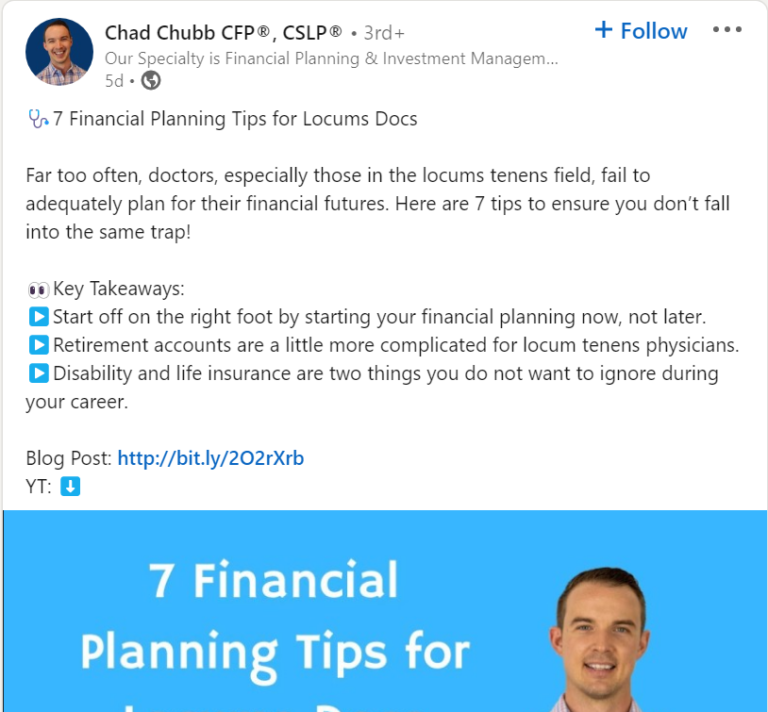In This Issue:
- Amid Shortage, 51% of Primary Care Providers Are Nurse Practitioners & Physician Assistants
- 8 Desperately Needed Physician Specialties in Rural America
- Understand and Make Changes to Combat Burnout
- Depression, Burnout, and Suicide Among Physicians
- Study: Physicians Becoming Harder to Replace as Burnout Continues
- Medical Economics Physician Bootcamp: Business Training for Physicians
- Picking the Right Financial Adviser
- Socially Speaking: Posts from Pacific Northwest, Cross Country, Interim Physicians & more
- Physician Pay Is Increasing In These Specialties
Amid a Physician Shortage, 51% of Primary Care Providers Are Nurse Practitioners and Physician Assistants
Nurse practitioners (NPs) and physician assistants (PAs) are filling the primary care physician gap. Here’s which states have the highest percentage of NPs and PAs in primary care.
(Edited from Value Penguin post by Maggie Davis, 8/22/2022)
The COVID-19 pandemic spotlighted America’s healthcare workers, as well as staffing shortages in an industry where people are increasingly overworked. Although the pandemic caused significant healthcare staff shortages, it also exacerbated those developing before the crisis struck—namely, an increasing shortage of physicians across the US.
There’s an increasing demand for healthcare professionals. America is an ever-growing and aging nation—the US Census Bureau even projects that the number of older adults will be higher than the number of children for the first time in 2034. Older adults need regular healthcare, particularly with 6 in 10 adult Americans having a chronic disease.
However, other healthcare professionals are stepping in to provide primary care. According to ValuePenguin health insurance expert Robin Townsend, the emergence of these professionals in primary care has benefits.
“Nurse practitioners and physician assistants are (at least partially) filling the primary care provider gap left by physicians,” Townsend says. “That’s good for patients across the US—especially those without insurance—as it gives them better access to affordable care.”
Key Findings
- There are 168.7 primary care providers (PCPs) for every 100,000 Americans. The District of Columbia has the highest rate of PCPs (464.1 per 100,000 residents). while Washington state has just 107.9 PCPs per 100,000 residents—the fewest among all US states.
- Nurse practitioners (NPs) and physician assistants (PAs) help fill those primary care gaps. In fact, NPs (42.9%) and PAs (8.2%) combined make up a larger portion of primary care providers than physicians, at 51.1%. Slightly fewer than 49% of PCPs in the US are physicians (including doctors specializing in internal medicine, family medicine, and pediatrics).
- Kansas has the highest percentage of NPs and PAs in PCP roles (80.9%), followed by Louisiana (77.5%) and North Dakota (72.9%). Meanwhile, the District of Columbia has the highest percentage of physicians in PCP roles (76.3%), followed by Hawaii (68.2%) and Pennsylvania (63.1%).
- Since 2016, the number of nurse practitioners has jumped by 56.2%, while the number PAs has increased by 27.8%. Meanwhile, the number of physicians in the combined specialties of internal medicine, family medicine, and pediatrics has dropped by 0.21%.
- NPs and PAs are among the 10 fastest-growing professions, according to U.S. Bureau of Labor Statistics (BLS) projections. From 2020 to 2030, NP jobs are predicted to grow by 52.2%, while PA roles are expected to grow by 31.0%. At the same time, the predicted growth for all occupations is 7.7%.
To see more detailed information from ValuePenguin’s analysis, click here.
To read an analysis of this issue by Physicians Practice writer Todd Shryock, click here.
All News Is Locums
8 Desperately Needed Physician Specialties in Rural America
(Edited from CompHealth blog post by Kathleen Stone, 9/29/2022)
Everyone knows there’s a physician shortage. But one thing that isn’t talked about as much is the fact that high-demand physician specialties are becoming increasingly concentrated in urban areas. While it’s a ‘plus’ for urbanites, the trend leaves many in rural America struggling to receive timely care.
Here are eight physician specialties rural healthcare facilities need most desperately.
1. Psychiatry
One-fifth of people living in rural areas (about one-fifth of the US population) have some type of mental illness, according to the National Center for Biotechnology Information (NCBI). This is proportional to more urban areas, but the number of physicians in these areas is not.
In fact, NCBI found there’s no practicing psychiatrist in up to 65% of rural counties. This makes access to mental healthcare that much more difficult; patients who need to see a psychiatrist regularly will likely need to travel long distances.
Because psychiatry is among the high-demand physician specialties nationwide, locum tenens psychiatry jobs are plentiful.
Dr. Heather Cumbo is a psychiatrist who works locum tenens. She has worked in areas with 250-patient waiting lists as a result.
“I’m also taking care of people who otherwise would not have any mental healthcare at all,” Dr. Cumbo said. “So, it’s very gratifying to feel as though I’m actually giving back to my community.”
2. OB-GYN
According to the American Association of Medical Colleges (AAMC), half of the counties in the United States don’t have an OB-GYN physician. There are two main issues causing this. First, there’s a shortage of OB-GYNs across the country in general, so their concentration in larger cities isn’t surprising.
Second, the shortage puts greater pressure on the existing OB-GYN population, leaving them at greater risk of practice-related burnout. The AAMC found that many obstetrics and gynecology patients have to travel more than half an hour to see their physicians. In an emergency, this travel time can be perilous.
3. Anesthesiology
Providing anesthesia services is critical for hospitals, yet rural hospitals continue to shut down. According to the University of Toronto, there are few rural anesthesiologists because rural areas “do not provide the volume or complexity” necessary to attract and afford them.
Thus, patients suffer. For routine, non-emergent surgeries, patients are able to travel, but for emergency surgeries like cesarean delivery, anesthesia is crucial but missing. The University of Toronto mentioned that the availability of anesthesia can avert 37% of disability-adjusted life years lost during surgeries.
4. Cardiology/Cardiovascular Surgery
When it comes to cardiovascular care, rural Americans face a slew of barriers. First, obesity is much more prevalent in rural areas than in urban areas; 34.2% of adults in rural areas are obese compared to 28.7% in urban areas, according to the CDC.
Second, rural patients are less likely to have healthcare insurance and more likely to have lower-quality care. Third, they’re older than their urban counterparts, so their care tends to be more serious.
Given all this, why aren’t more cardiologists available in rural areas? Again, there’s a shortage of cardiologists across the country that could create a shortage of more than 7,000 cardiologists by 2025.
5. Orthopedic Surgery
Orthopedic surgeons are in short supply across the country, with rural areas feeling the pinch the most. Some 60 million people living in rural areas have limited access to orthopedic surgeons, according to NCBI. Rural communities are generally too small to support a full-time orthopedic surgeon when their average salary is currently more than half a million dollars per year.
Dr. Sonya Sloan is an orthopedic surgeon who works locum tenens jobs in rural New Mexico. She visits for one week each month, so her patients and staff know her.
“I’ve been there long enough to see patients that have brought their moms and their dads and their children. I’ve treated three generations now in some families,” Dr. Sloan said. “The word gets out if there’s a good doctor there who they know that is going to take care of them.”
6. General Surgery
In the last 20 years, the number of general surgeons has decreased by 18% overall, but by nearly 30% in rural areas. Moreover, nearly 60% of rural general surgeons are at least 50 years old, so the availability of general surgeons will likely continue to decline.
The decrease in the general surgeon population is particularly difficult considering that many must be ‘jacks of all trades,’ handling surgical cases that specialists generally handle in urban centers.
7. Neurology
A study of Medicare data found that some rural areas had as few as 10 neurologists for every 100,000 people. As in many of these physician specialties, the shortage of neurologists arises from the fact that many rural communities can’t support a full-time neurologist.
That same study found that 2.1 million people saw a neurologist over a one-year period for conditions including dementia, strokes, back pain, and brain injuries.
Patients in rural areas, however, are less likely to access a neurologist. For example, only 38% of rural dementia patients saw a neurologist during the study period, compared to 47% of urban dementia patients. Furthermore, only 21% of rural stroke patients saw a neurologist, compared to 31% of urban patients.
That’s one reason why Dr. Andrew Wilner, FACP, FAAN, encourages others to try locum tenens: “Locum tenens can transform clinical work from a daily grind to an adventure,” Dr. Wilner said. “Traveling to far-flung locales and helping underserved populations can extinguish ennui (French for “boredom”) and prevent burnout. Locum tenens assignments are one way to fall in love with medicine again.”
8. Urology
According to the American Urology Association, 89.5% of urologists live in areas with more than 50,000 people. This leaves just 10.5%, or 1,408 of urologists working in rural areas.
In an interview with AAMC, Christopher Gonzalez, MD, public policy council chair at the AUA, explained that urologists make up less than 1% of all doctors in the United States, but that three of the most common cancers in men (bladder, kidney, and prostate) are treated by urologists.
Of the urologists in rural areas, many are older, making it likely that the shortage will continue to worsen.
Understand and Make Changes to Combat Burnout
(Edited from MedCare Staffing blog post by Ersilia Pompilio RN, MSN, PNP, 10/5/2022)
“Working five days a week, nine to five. Charting patient information after work hours at home. Now my boss wants me to be on call for my patients two weekends a month. Oh wait, what about my husband and my 18-month-old child?”
These were the protests left by a healthcare provider on a recent social media post. Burnout.
Let’s face it, working as a healthcare provider is not getting any easier. It seems nearly impossible to pair that with raising a family, juggling friends and social obligations. It’s a perfect recipe for burnout.
In a survey conducted in 2021, 52% of US workers stated that they are experiencing burnout. Work-from-home employees, or virtual workers, said they are working “much more” than before the pandemic. Unplugging after work is a challenge for many workers, with 27% reporting that they keep working at home. Many workers state that working more hours is prompted by increased pressures from management, customers, and clients.
A Socio-Psychological Phenomena
Burnout can creep up on you slowly. One day you might wake up to find yourself transformed into a monstrous cockroach, much like the character Gregor Samsa in Franz Kafka’s famous play “The Metamorphosis.” Gregor’s transformation was blamed on his dreary job as a traveling salesman and his obligations to provide for his family. Basically, he was burnt out.
Believe it or not, burnout is considered a ‘syndrome,’ a socio-psychological phenomenon that includes physical, motivational, and emotional exhaustion. The cause: chronic occupational stress.
The clinical picture of burnout is multifaceted. It’s not just about your job or your family. It’s also related to the role you are playing in society. Are your work and home life bringing you joy? Are you being a productive member of society? Are you living life unconsciously on someone else’s terms?
Negative Consequences
Burnout is a set of somatic and psychosomatic disorders which are symptoms of social dysfunction. Healthcare providers commonly suffer from burnout due to the dedication and increased levels of empathy felt for their patients.
Healthcare providers suffering from burnout are susceptible to increased medical errors and potentially higher malpractice rates. Poor work performance can also decrease patient satisfaction scores and lower quality care. Burnout can also have devastating effects with high healthcare staff turnover rates, increased alcohol and drug addiction, and a high risk for suicide.
Signs
- Exhaustion
Low emotional and energy levels are proceeding in a downward spiral. Healthcare providers may be running on fumes and asking themselves how long they can continue. - Depersonalization
Being detached from one’s mind, body, and mental processes. Subsequently, you may be observing your life from the outside. You may be using cynicism and sarcasm to talk about your patients. Emotionally you are unavailable to your patients and perhaps even your family. - Lack of Efficacy
Doubting the meaning of your work. You may question the purpose of your work; in addition, you may be critical of yourself, worrying that you may make more errors.
Causes of Job Burnout
- Chronic Work Overload. Daily increases in the number of patients. Nurses handle significantly higher ratios of patients per person at the bedside, creating unsafe staffing. Burnout is inevitable with work politics, personality clashes, workplace bullying, and sloppy management.
- Work-Life Imbalance. Work may take up most of your time, leaving very little time spent on family and personal activities that satisfy you.
- Monotonous Environment. Albert Einstein coined the phrase, “Insanity is doing the same thing repeatedly and expecting different results.” When a job is chaotic and dull, extra energy is needed to remain focused and motivated.
- Unclear Role Expectations/Lack of Support. Insufficient resources, inability to influence job scheduling, and lack of resources needed to do your job safely can increase burnout. Lack of social support on the job and at home can also increase your risk for burnout.
- Speaking a Non-Native Language On the Job. Having to speak in a language on the job that is not your native language can increase fatigue. Non-native speakers experience increased fatigue from having to constantly monitor their communication on the job.
Physical Signs to Look For
Burnout may creep up on you slowly. You may start missing work deadlines and delaying updating your licensing credentials or attending continuing education courses to update your certificates. Recognizing the symptoms of burnout before you start turning into a “Kafka cockroach,” is key to shifting your reality and staying focused on the job and your life.
Some physical symptoms of burnout include insomnia, headaches, chronic fatigue, stomach aches, isolation, increased irritability, struggling with daily tasks, and depression. Ignoring physical signs of burnout may, in time, lead to more significant physical and mental health issues. These include elevated blood pressure, type 2 diabetes, low immune system, and increased susceptibility to various other illnesses.
Tips to Stop Burnout
- Re-Evaluate Your Life
Taking a self-inventory of your personal and professional goals is an excellent way to evaluate your life for balance. Some questions you can ask yourself include: Are you happy at your current Job? What changes can you make to increase your happiness and satisfaction with your work? Are you working at home once your work day is complete? Can you disconnect easily from work and spend quality time with family and friends? - Get Better Sleep
Examine your sleep hygiene to optimize your sleep cycle. All things considered, treating sleep as a priority in your life is crucial to combating burnout. - Exercise
Various aerobic exercises like running can help increase mental focus and clarity. New research suggests that aerobic exercise helps you to recover from mental exhaustion and burnout. - Take a Vacation
Vacations can provide you with mental and physical rest. If you cannot take a whole one-week or more extended vacation, ‘micro vacations’ may be a solution. Micro vacations like a ‘normal’ vacation micro vacations offer a change of scenery, even if it’s just for one day. They can reinvigorate your senses by sitting on a local beach, going on a hike, or sitting at a trendy café watching people. It’s best to be mindful when taking either a vacation or a microvacation so that you do not pick a venue that may trigger you to work. - Mind Your Mental Health
The best therapies to help combat burnout include psychotherapy and cognitive behavioral therapy (CBT), physiotherapy, pharmacotherapy, music therapy, hypnotherapy, and mind-body therapies. Telehealth services for mental health are also an option. They are gaining in popularity and are easier to access. - Pursue Creative Outlets
Studies show that engaging in creative outlets like music, visual arts therapy, movement-based creative expression, and expressive writing reduces the psychological and physiological effects of burnout. - Try Mindfulness
The best way to start practicing mindfulness is to pay attention to something you do daily. Stopping in the middle of your day to take deep breaths can also bring you greater awareness of your surroundings. Courses on mindfulness can teach you how to reduce stress and burnout. - Start a New Adventure and Give Locum Tenens a Shot
Considering your options in your current work-life situation is key to combating burnout. Maybe you need to make a change: work in a different setting and see new places. Like its fellow NALTO-member companies, MedCare Staffing can provide a change of scenery, potentially clearing away the burnout in your work life.
The Healthcare Staffing Story
Depression, Burnout, and Suicide Among Physicians
(Edited from Physicians Practice article by Richard Payerchin, 10/19/2022)
Sept. 17 is National Physician Suicide Awareness Day, billed as a reminder and a call to action. Last year the awareness campaign reached 1.2 million people and received support from 54 medical and other organizations, resulting in 26,000 actions taken to prevent suicide, according to sponsors The Physicians Foundation, the Dr. Lorna Breen Heroes’ Foundation, and FirstRespondersFirst.
Physician burnout and suicide are serious issues that need addressing—but dealing with them can call for very different approaches.
Although there may be overlap between the two in symptoms and distress that people feel, focusing solely on burnout can create a risk of missing depression, a serious medical illness with potentially life-threatening consequences if left unaddressed, says Christine Yu Moutier, MD, chief medical officer of the American Foundation for Suicide Prevention (AFSP).
Moutier was co-author of a study on feelings of depression and burnout in 2,281 medical trainees, staff, and faculty at University of California San Diego Health, where the Healer Education and Assessment and Referral Program has been heralded as a model system for physician and medical staff suicide prevention efforts.
Depression Is More Serious
The findings “suggest depression is a much more serious condition” with indicators of distress and suicide risk, including intense affective states, alcohol and drug use, and suicidal thoughts and behaviors. Burnout without co-occurring depression was not associated with higher rates of suicidal thoughts or behaviors or with substance use, compared with respondents who screened negative for burnout and depression.
Yet burnout and depression are real problems that must be addressed with systemic change in medicine, say Moutier and Kristen Kim, MD, corresponding author of a recent study on contributing factors to physician suicides across the country from 2003 to 2018.
Burnout is characterized by chronic workplace stress that can lead to a sense of emotional exhaustion, depersonalization or difficulty seeing others as human, and a low sense of personal accomplishment. Depression and suicide are clinical diagnoses requiring therapy and medications if appropriate, Kim says.
Solutions Require Recognition
Solutions start with recognizing physician suicide is a serious problem and with getting physicians to prioritize self-care in their everyday practices, Kim says. “I think medicine still, as a field, embraces this outdated sense that we need to sacrifice everything as a physician, including our own well-being,” she says. “And that is just simply wrong. At this point, it’s time to move beyond that and to really prioritize our own well-being in order to best care for our patients.”
In the study of physician suicides, one stressor was the incapacity to work due to deteriorating physical health. Physicians tell their patients to stay healthy and they need to do the same, Kim says.
When scheduling appointments, physicians face the same barriers patients do. Primary care and specialist physicians often have office hours that overlap with our work schedules, so physicians as patients sometimes must wait days, weeks, or months for appointments. Flexibility in scheduling and telehealth could offer solutions, although telehealth limits physical examinations, Kim says.
AFSP notes primary care providers are “in a unique position to identify patients at risk of suicide and enact appropriate intervention methods,” including for fellow physicians. The foundation advocates increased training for physicians to better understand suicide assessment, treatment, or risk management.
Talking and Listening Is a Start
Even without added training, talking and listening can be a start. Physicians must be on the lookout for colleagues who are struggling and embrace the mindset that, as a community, “we can make a difference,” Moutier says.
“We don’t need to be their doctor or therapist; we’re being a colleague and a friend,” she says.
If physicians sought therapy or psychiatric treatment, Moutier suggests sharing that information with a colleague in distress.
“Give them permission to take those steps themselves by showing and modeling that that can be done safely and without any negative repercussions on your career,” Moutier says. “I’ve seen it happen innumerable times; there is so much more fear about the harm that will come from seeking treatment than there is. And the truth is that the true source of fear, and sort of danger, is actually from unaddressed mental health conditions when they’re left to go unaddressed because of the barriers that are in the way.”
Study: Physicians Becoming Harder to Replace as Burnout Continues
(Edited from Becker’s Hospital Review article by Kelly Gooch,10/19/2022)
The Association for Advancing Physician and Provider Recruitment (AAPPR) released a study Oct. 18 highlighting the ongoing physician shortage nationwide. This year’s findings indicated that the US physician shortage is increasing, affecting recruitment and retention, AAPPR said.
The study is based on data representing more than 175 AAPPR member organizations and more than 23,000 searches, more than half specific to physicians.
Six Study Findings
1. Nearly half of all physician searches last year (48 percent) were to replace departing physicians. That is up 16 percentage points since AAPPR’s 2018 study.
2. Thirty-three percent of departing physicians cited burnout as the reason behind them leaving their organization.
3. Healthcare organizations are increasingly relying on physician assistants and nurse practitioners because there are more candidates, and credentialing is quicker.
4. The percentage of physician searches filled last year decreased for the fourth straight year.
5. Primary care specialties of family medicine, internal medicine, and hospital medicine physicians are the most in-demand specialties.
6. Physician positions least likely to be filled last year included otorhinolaryngology, dermatology, and urology.
To access the full report, click here.
Tools to Try/News to Use
Physician Bootcamp
Winter 2022
Beyond the Classroom
Business Training for Physicians
NOVEMBER 17, 2022 | 3PM – 7PM EST
Improve your Practice and Your Bottom Line
Medical Economics® understands physician burnout and challenges that impact your business. Join us on November 17 for this must-attend virtual learning event. Expert-led panelists will guide you through ways to: streamline challenges, maximize efficiency, and put more money in your pocket.
Your time is valuable, which is why we have thoughtfully curated four sessions with practical learning objectives and actionable solutions.
Registration is FREE!
Program will be available on-demand to registrants.
Picking the Right Financial Adviser
(Edited from Physicians Practice article by Keith Loria, 10/18/2022)
Working with a financial adviser who knows the specific requirements of the profession is critical for doctors and their practices. It’s a safe bet that a physician has a good salary, but because of income compression, tax reduction demands, and asset preservation concerns, doctors have issues that many other professions don’t have.
That’s why it’s important that when choosing a financial adviser to look for one who has experience dealing with doctors and perhaps even specializes in the healthcare field.
“Doctors should look for someone who truly understands a physician’s life, loans and constraints,” says Brynna Connor, M.D., owner of a family practice in Austin, Texas, and healthcare ambassador at NorthWestPharmacy.com. “We have specific needs that many other professions don’t, and our financial advisers should be well versed in how to best serve those needs.”
She notes that because most doctors don’t take business courses in medical school or have a strong business background, having a financial adviser is important to make the best use of one’s income for retirement purposes.
Two Keys: Communication and Trust
In healthcare finance circles, you often hear the expression “no margin, no mission.”
“In the context of medical practices, this means that after all non-physician staff, supply, space and other expenses are paid, a practice needs to generate enough revenue to support any employed physicians and physician owners, otherwise the practice won’t exist for long,” says Stu Schaff, founder and principal of Intentionate Healthcare Advisors, a healthcare consulting firm that works with medical practices.
He adds that because most physicians don’t have much formal business education and they typically prefer to focus on the health of their patients, it makes sense for them to seek out an adviser who will help them achieve their goals and find the most sustainable way to practice.
“The two keys to success are communication and trust,” Schaff says. “It’s critical that the physician is open and honest about their goals, so the consultant can tailor their advice accordingly.”
Andrew Rosen, a financial planner and president of Diversified LLC in Wilmington, Del., notes it’s imperative to understand the client-adviser relationship and realize it’s just as important as a doctor-patient relationship.
“You need to be able to trust your adviser, know that they’ll get back to you in a timely manner and feel that they understand your goals, lifestyle and wishes,” he says. “You want your relationship with a financial adviser to be a long partnership, so a clear understanding of how often you’re going to meet, how often they communicate and what individuals (CPA, attorney, etc.) might be on their team is important before you get started.”
Also, just as doctors each have a different bedside manner, advisers do too, so they need to find one that fits well with their personality.
“If you’re concerned about market volatility, find an adviser who addresses your concerns and questions instead of brushing them off,” Rosen says. “It’s important that your adviser listens to your specific needs and questions to create a financial plan that works for your life and your risk tolerance.”
Get Referrals, Check Credentials
Warren Ward, founder and certified financial planner at WWA Planning & Investments in Columbus, Ind., advises physicians to start seeking an adviser through referrals, as it’s easy to be misled in an online search for an appropriately credentialed expert.
For example, the term “board certified” has a clear and consistent meaning among physicians. In the world of investment advice, however, there are more than 200 designations, several starting with the words “board certified,” but their meaning is entirely different, he notes.
“One of the most important qualifiers is registered investment advisor (RIA). They are held to a fiduciary duty of care, meaning the person or firm is required by law to work in their clients’ best interests,” Ward says. “Those without an RIA classification are permitted to only provide advice incidental to their primary business of selling insurance and/or investments. And when it comes to investments, they are only required to recommend those that are not unsuitable in the situation.”
Ask Questions
Once a few names are gathered, physicians should do their due diligence on each. Just as a doctor isn’t able to treat every patient, not every adviser will be helpful for every situation.
Some questions to ask include, “In whose best interests does your firm work?” “How are fees calculated and charged?” “How long has the adviser been in the industry?” “Would I be working with a person or a team?” and “Will the adviser sign a fiduciary oath?”
“Physicians, who are themselves held to the highest possible standard in the practice of medicine, can readily grasp how using a non-fiduciary financial adviser might pose a danger to their own financial health,” Ward says. “Doing the research to make an informed choice is the best preventive medicine.”
Kevan Melchiorre, co-founder and managing partner of Tenet Wealth Partners in Champaign, Illinois, specializes in financial planning and management for physicians. In addition to needing an experienced fiduciary, he suggests finding an adviser who has recognized and well-respected credentials in financial planning and/or investment management, citing the designations of CFA, CFP and CMP.
“Beyond illustrating the adviser’s subject-matter knowledge and expertise, all of these designations have their own code of ethics and fiduciary duty in order to continue using the designation,” he says. “You should also seek out a technical expert, not just from an investment perspective but also in financial planning, particularly if they understand the complexities around tax, insurance, investments, retirement, estate planning, as well as philanthropic planning.”
Recognize Red Flags
A good marriage between adviser and physician starts with communication. The adviser must know the physician’s goals and the physician must trust the adviser.
However, not every financial adviser is right for every physician. A bad match might be someone who does not consider the specific goals the physician has in mind, such as leaving clinical work at some point, starting a private practice, retiring early, or other things related to the field.
“I have changed my advisers over the years as I needed someone more in tune with my goals,” Connor says. “I would advise all people never to hesitate to find a new financial adviser if they aren’t entirely confident that they truly understand your goals and have relevant experience to help you reach them.”
Although adviser value is often defined by investment returns, often the most significant long-term value can be added through proper planning techniques.
“Physicians will also want to look for an adviser who is transparent, both in potential conflicts of interest as well as how they charge for their services,” Melchiorre says. “The commission-based brokerage model is becoming a thing of the past, so you should try to find an adviser who is fee based or fee only. These advisers generally charge a percentage of assets under management and/or a financial planning fee but do not charge commissions on transactions.”
At the end of the day, a physician should always know exactly what they are paying, how they are paying, and what value they are getting in return for the cost.
How ‘Bout This?
Physician Pay Is Increasing In These Specialties
(Edited from Becker’s ASC Review article by Patsy Newett,10/24/2022)
Physician pay is increasing in eight specialties, according to Merritt Hawkins and AMN Healthcare‘s 2022 “Review of Physician and Advanced Practitioner Recruiting Incentives.”
The report is based on 2,695 physician and advanced practitioner job search engagements conducted from April 1, 2021, to March 31, 2022. Merritt Hawkins and AMN Healthcare are both physician staffing companies hired to look for physicians in these specialties for the last year.
Here are the eight specialties for which average starting salaries jumped over the past year, ranked by percent increase:
- OB-GYN: 10.3% increase — from $291,000 to $321,000
- Anesthesiology: 9% increase — from $367,000 to $400,000
- Cardiology: (Non-invasive): 8.5% increase — from $446,000 to $484,000
- Neurology: 7.3% increase — from $332,000 to $356,000
- Gastroenterology: 4.6% increase — $453,000 to $474,000
- Orthopedic Surgery: 3.5% increase — from $546,000 to $565,000
- Urology: 2.6% increase — from $497,000 to $510,000
- Internal Medicine: 0.4% increase — from $255,000 to $256,000











